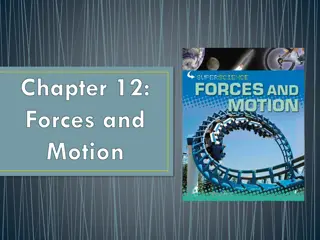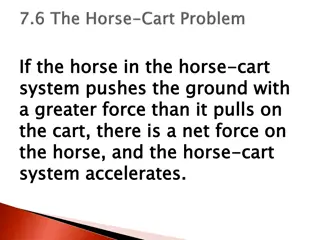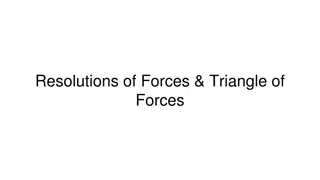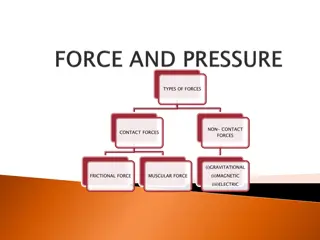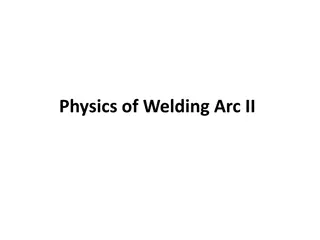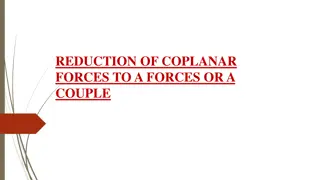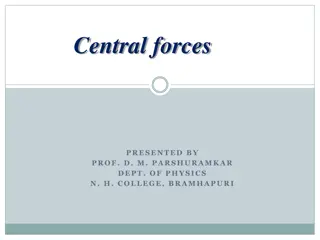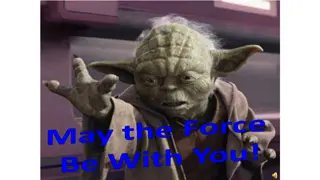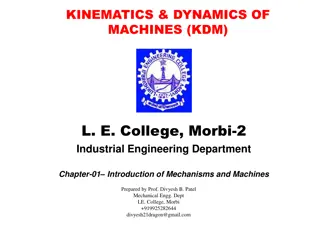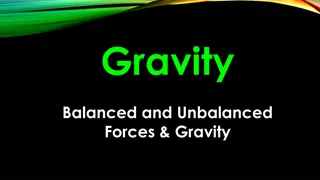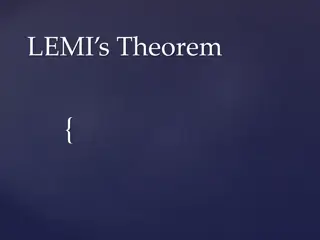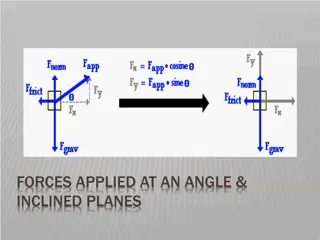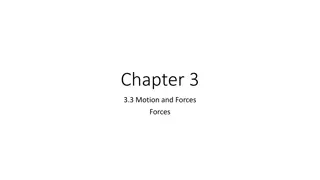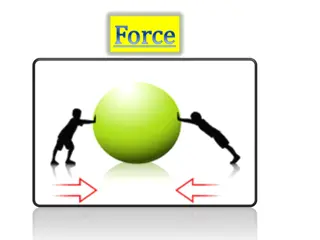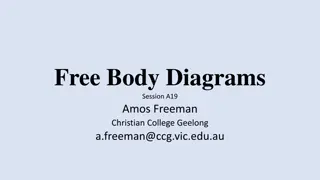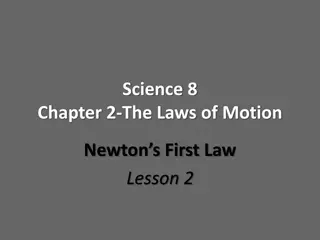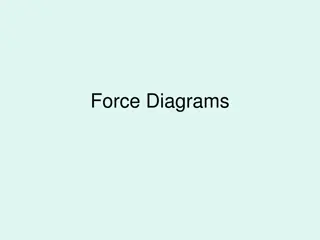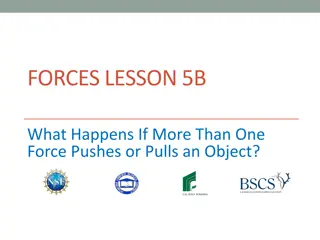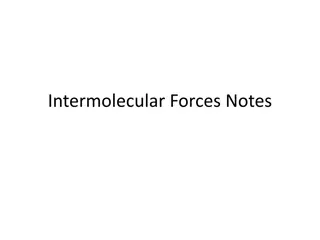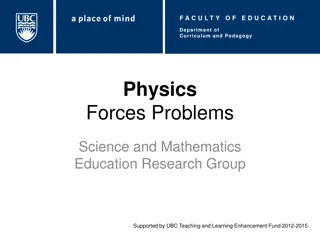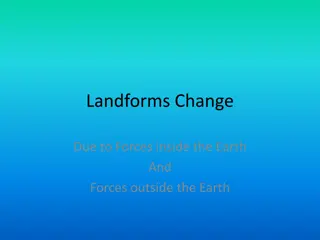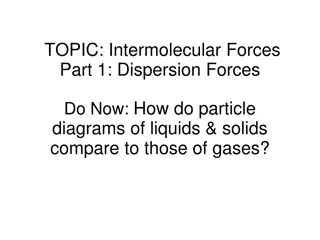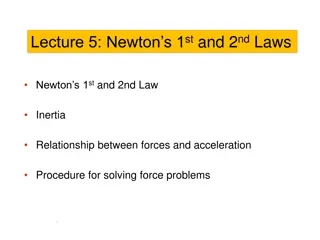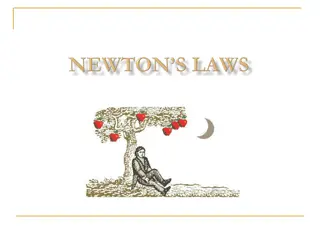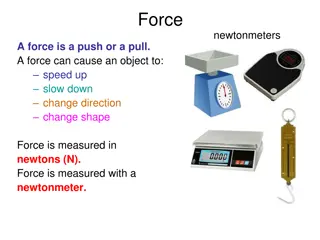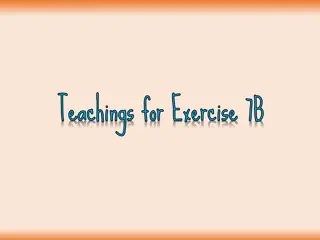Forces and Motion in Physics
Exploring the concepts of forces and motion, this content delves into the fundamental aspects of how forces impact objects' movement. Covering topics such as measuring force, representing force as a vector, combining forces through addition and subtraction, and understanding balanced and unbalanced
2 views • 61 slides
INTERMOLECULAR FORCES (IMF)
Exploring the concepts of intramolecular bonds versus intermolecular forces, the impact of intermolecular forces on states of matter, different types of intermolecular forces, and the significance of dipoles in chemistry. Dive into the world of IMF with visual aids and real-world analogies.
2 views • 12 slides
The Horse-Cart System: Forces and Acceleration Explained
The Horse-Cart problem delves into the dynamics of forces acting on a horse pulling a cart, highlighting the importance of net forces, accelerations, and external interactions with the ground. The analysis simplifies the complex system by focusing on key forces impacting the cart's movement and the
1 views • 17 slides
Cohesive Devices in Writing
Cohesive devices such as adverbials, determiners, and pronouns play a crucial role in creating a flow in writing. By organizing adverbials into groups based on where, when, how, and how often they describe actions, writers can enhance the clarity and coherence of their texts. Additionally, recognizi
1 views • 11 slides
Resolutions and Triangle of Forces in Physics
Resolutions of forces involve breaking down a force into components, while the Triangle of Forces explores how forces interact in equilibrium. By analyzing graphical and mathematical representations, you can determine the resultant force and its direction using trigonometric functions. Applying the
1 views • 11 slides
Action and Reaction Forces in Physics
Explore the concept of action and reaction forces in physics through examples like a falling boulder and interactions between different masses. Understand how forces are equal and opposite, leading to accelerations based on mass and force interactions. Discover the relationship between Earth and the
0 views • 16 slides
Different Types of Forces and Their Applications
This content explores various types of forces including non-contact and contact forces such as gravitational, magnetic, electric, frictional, and muscular forces. It also discusses the effects of forces on different surfaces and provides examples of force application in real-life scenarios.
1 views • 10 slides
Arc Forces in Welding: Gravity and Surface Tension Forces
Explore the significance of arc forces in welding, focusing on gravity and surface tension forces. Learn how these forces impact metal transfer, deposition efficiency, and welding quality. Discover the role of gravitational force in detachment and transfer of molten metal, and how surface tension fo
4 views • 25 slides
Coplanar Forces and their Classification
Coplanar forces are forces that lie in the same plane and can be classified into concurrent, parallel, non-concurrent, and non-parallel systems. These forces can be reduced to a single force or a couple for analysis. Understanding these force systems is essential in engineering and physics to determ
2 views • 20 slides
Central and Non-Central Forces in Physics
Newton's laws of motion introduced the concept of forces, leading to the classification of fundamental forces like gravitational, electromagnetic, strong nuclear, and weak nuclear forces. Central forces act toward or away from a fixed center, while non-central forces are affected by additional param
0 views • 7 slides
Van der Waals Forces and Intermolecular Interactions
Van der Waals forces encompass London dispersion forces, dipole-dipole forces, and hydrogen bonding, influencing interactions between atoms and molecules. London dispersion forces are the weakest and present in all molecules, dipole-dipole forces involve permanent dipoles, and hydrogen bonding, the
0 views • 9 slides
Forces in Physics
Explore the concept of forces in physics, including definitions, measurement units, combining forces, and their effects on objects' motion. Learn about balanced and unbalanced forces, net force, force pairs, directions, magnitude, and how to combine forces at right angles. Develop a solid understand
0 views • 24 slides
Introduction to Kinematics and Dynamics of Machines in Mechanical Engineering
Theory of Mechanics delves into motion, time, and forces, with Kinematics focusing on motion analysis without considering external forces. Kinetics, a branch of Theory of Machines, deals with inertia forces resulting from mass and motion. Dynamics combines Kinematics and Kinetics to study motion and
0 views • 14 slides
Gravity and Balanced/Unbalanced Forces in Physics
Explore the fundamental concepts of gravity and balanced/unbalanced forces in physics. Gravity is the force that pulls objects toward each other, acting universally. Balanced forces maintain object stability, while unbalanced forces can cause motion changes based on direction, strength, and mass. Di
0 views • 9 slides
Forces in Mechanics: Fundamentals and Applications
Prof. Madhuri Reddy, an Assistant Professor at Hope Foundation's International Institute of Information Technology, explains the characteristics of forces, systems of forces, and the concept of resultant force and composition of forces in mechanics. Forces are defined as agents that produce or destr
0 views • 11 slides
Lami's Theorem in Physics
Lami's Theorem is an equation that explains how the magnitudes of forces acting on a point keep an object in equilibrium. This theorem relates the forces with corresponding angles and is derived by understanding the sum of forces acting on a point. By utilizing complementary angles and the sine rule
0 views • 8 slides
Surface Tension in Physical Pharmacy Lab
Surface tension is a crucial concept in physical pharmacy lab dealing with gas-solid or gas-liquid interfaces. It refers to the force per unit length required to balance the inward pull on the surface. Interfacial tension, cohesive forces, and adhesive forces play significant roles in determining su
0 views • 16 slides
Forces Applied at an Angle on Inclined Planes
Exploring the concept of forces applied at angles other than 90 degrees on inclined planes, the process involves resolving forces into component vectors, finding net forces in each direction, writing force equations (Fnet = ma), and solving for normal force and acceleration in practical scenarios li
0 views • 28 slides
Forces in Motion: A Comprehensive Overview
Forces play a crucial role in our daily activities, influencing motion and direction. This chapter delves into the concept of forces as pushes or pulls, exploring balanced and unbalanced forces and their impact on velocity. By examining real-life scenarios like kicking a soccer ball or opening a doo
0 views • 10 slides
Balanced and Unbalanced Forces in Physics
Forces play a crucial role in determining an object's motion. Balanced forces have a net force of 0 N, resulting in no change in motion, while unbalanced forces lead to a change in motion. Inertia, the resistance to changes in motion, and the concept of combining forces are also important in underst
2 views • 30 slides
Forces and Mass
Forces, such as contact and non-contact forces, interact with objects to cause motion or deformation. Mass is the amount of matter in an object, measured in kilograms. Learn about applied force, normal force, frictional force, air resistance, spring force, tensile forces, compressive forces, and she
1 views • 29 slides
Effective Teaching Strategies for Understanding Forces in Physics
Explore innovative methods to enhance student comprehension of forces in physics through clear and consistent force naming conventions. Emphasizing the importance of using three-word names for forces, this approach simplifies complex concepts and promotes a deeper understanding of Newton's Third Law
0 views • 33 slides
Newton's First Law of Motion: Inertia and Forces
Understanding the concept of inertia in motion, the role of forces in maintaining or changing motion, and analyzing net forces applied to objects. Also explores scenarios where forces are balanced or unbalanced, affecting the motion of objects.
0 views • 12 slides
Surface Tension in Physical Pharmacy Lab
Surface tension is a critical aspect in physical pharmacy lab experiments, involving the study of forces at gas-solid or gas-liquid interfaces. It is the force per unit length required to counterbalance the net inward pull on a surface. The concept extends to interfacial tension, cohesive and adhesi
0 views • 21 slides
Force Diagrams and Balanced/Unbalanced Forces
Explore the concepts of force diagrams, balanced forces, and unbalanced forces through visual examples and explanations. Learn how balanced forces keep objects stationary or at a constant speed, while unbalanced forces cause movement and changes in direction. Practice calculating resultant forces an
1 views • 11 slides
Forces: Effects of Multiple Forces on Objects
Exploring the impact of multiple forces on objects through scenarios involving friction, pushing, and pulling. Students investigate the role of gravity and analyze how different forces influence the movement or stability of objects. The lesson includes hands-on activities and discussions to deepen u
0 views • 10 slides
Intermolecular Forces: Strength, Types, and Examples
Intermolecular forces are attractions between molecules, weaker than chemical bonds. They include London dispersion forces, dipole-dipole interactions, and hydrogen bonding. Strength varies, with covalent bonds being the strongest and London dispersion forces the weakest. Different types of intermol
0 views • 15 slides
Physics Forces Problems in Education Curriculum
Explore forces problems in physics education with examples of tug-of-war scenarios and explanations on friction forces. This content delves into the application of physics principles in practical scenarios to aid understanding in science and mathematics education research. Discover how to handle for
0 views • 25 slides
Physics Concepts Review: Motion and Forces
Explore essential concepts in physics related to motion and forces, including forces acting against falling objects, gravitational forces, momentum, inertia, and more. Test your knowledge with questions on gravity, air resistance, satellite orbits, and the law of universal gravitation.
0 views • 17 slides
Forces Shaping Landforms: Inside and Outside the Earth
Explore how landforms change due to forces inside the Earth, like plate boundary activity forming fold mountains, and forces outside the Earth, such as the creation of oceanic trenches. Discover the formation of fold mountains like the Alps and Rockies, as well as deep oceanic trenches like the Mari
0 views • 10 slides
Weak Interactions and Hydrogen Bonding in Molecular Forces
Exploring van der Waals forces, hydrogen bonding, and weak interactions in intermolecular forces and surface interactions. Understanding interactions between backbone peptide groups and orientation dependence of hydrogen bonding through dispersion forces and repulsive potentials.
0 views • 22 slides
Intermolecular Forces and Dispersion Forces in Molecules
Particle diagrams of liquids, solids, and gases reflect distinct arrangements due to intermolecular forces. The existence of substances as gases, liquids, or solids at room temperature is attributed to the forces between molecules known as intermolecular forces (IMF), with dispersion forces being th
0 views • 30 slides
Building Cohesion in Writing: Cohesive Devices and Techniques
Understand the importance of cohesion in writing and how to achieve it using cohesive devices such as conjunctions, transitional phrases, synonyms, and pronouns. Learn how to organize your ideas coherently, use signposts effectively, and structure your writing for better readability. Enhance your wr
0 views • 18 slides
Newton's Laws of Motion: Inertia, Forces, and Acceleration
Delve into the fundamentals of Newton's first and second laws of motion, exploring concepts such as inertia, the relationship between forces and acceleration, and the procedure for solving force problems. Discover how objects behave when left to themselves, and grasp the significance of forces in ch
0 views • 21 slides
Forces and Equilibrium in Physics
Forces in physics can be categorized into contact forces and field forces, measured in units like Newtons (N). Inertia, mass, weight, and equilibrium are fundamental concepts in understanding the behavior of objects under different conditions. An object in motion stays in motion unless acted upon by
0 views • 15 slides
Forces and Their Applications
Forces are pushes or pulls that can cause objects to speed up, slow down, change direction, or shape. They are measured in newtons (N) using a newtonmeter. Various types of forces include contact, tension, electrostatic, friction, and gravitational forces. Forces always occur in pairs, with equal an
0 views • 46 slides
Efficient Bitruss Decomposition for Large-scale Bipartite Graphs
Bitruss decomposition is a powerful concept in graph theory to identify cohesive subgraphs in bipartite graphs. This paper by Kai Wang, Xuemin Lin, Lu Qin, Wenjie Zhang, and Ying Zhang presents an efficient approach for computing bitruss numbers of edges in large-scale bipartite graphs. The study ex
0 views • 25 slides
States of Matter
In this lecture by Assistant Prof. Dr. Fouad Al-Saady on physical pharmacy, the focus is on understanding the intermolecular forces that govern the behavior of molecules in different states of matter. Topics covered include cohesive and adhesive forces, repulsive and attractive forces, as well as th
0 views • 27 slides
Forces Edition of Who Wants to Be a Millionaire?
Test your knowledge about forces with this interactive quiz show styled as "Who Wants to Be a Millionaire? Forces Edition." Answer questions ranging from the types of forces, units of measurement, gravity, and static objects. Enjoy the challenge and see how much you know about the forces around us.
0 views • 61 slides
Teachings for Exercise 7B
In this exercise, you will explore the application of forces in equilibrium scenarios involving tension, weight, and other forces. Through detailed calculations and diagrams, you will learn how to determine tensions in strings, weights of beads, and forces acting on masses in various configurations.
0 views • 6 slides
